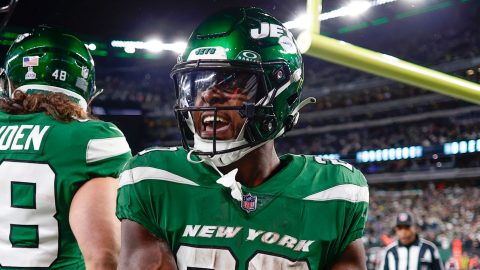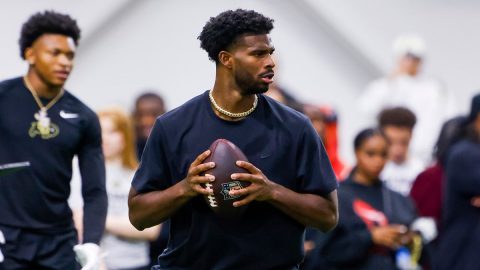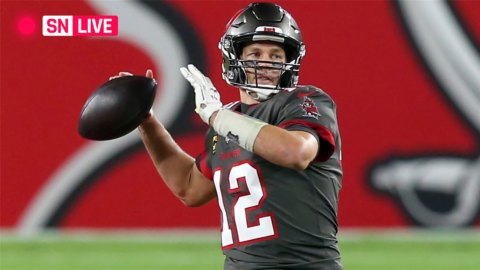
It feels good to be home.
After entering Tuesday having yet to play back-to-back games in the same city, making the first three weeks of the season feel like one extended road trip, Utah started its five-game homestand in a big way.
Led by Donovan Mitchell’s 27 points, the Jazz used big runs in the third and fourth quarters to take down Atlanta 110-98 on Tuesday night.
“It was good, good to be back,” Mitchell said postgame. “The atmosphere, whether it’s the fourth quarter and trying to get them (Atlanta) to miss for free Chick-Fil-A, that gives us a boost.”
that was fun.#TakeNote pic.twitter.com/JyGuhMJ7mt
— Utah Jazz (@utahjazz) November 10, 2021
Here are five things you need to know following the win:
1.) Jazz Lockdown Defensively In Fourth Quarter
Despite entering the fourth quarter with a 15-point lead, Utah knew Atlanta wasn’t going to go away quickly. The Hawks starting backcourt of Trae Young and Kevin Huerter had combined for 55 points through three quarters, 25 of which came in the third.
To pull out the win, the team knew they would have to find a way to contain the shooting exploits of Young and Huerter — and that’s precisely what happened.
Utah held both of them scoreless as they shot 0-for-5 from the floor (0-for-4 from deep) and a finished with a combined -25 rating.
“We were making shots, going back and forth. … But when we really honed in our defense and got stops and ran, we pushed the lead open,” Mitchell said. “You saw that especially in the fourth. I don’t think Trae or Kev scored in the fourth. … But we made it hard on them.”
After preaching about defense for much of the first three weeks of the season, the Jazz came through on that end of the court, leading to a much-needed victory that ended their two-game losing streak.
| “At the end of the day, we’ve got to continue to fight on the defensive end.”#WalkoffInterview | @lhmauto pic.twitter.com/hLYANZgQ9F
— Utah Jazz (@utahjazz) November 10, 2021
2.) Utah Knows How To Close Quarters
It’s not about how you start. It’s about how you finish.
By that logic, the Jazz were sensational in the second half on Tuesday night.
Despite entering the third and fourth quarters with double-digit leads, the Hawks staged comebacks at the beginning of each quarter to cut the deficit to single digits.
Rather than letting Atlanta complete its comeback, Utah did what championship-caliber teams do. The Jazz ended each quarter on huge runs that led to the eventual victory.
After Atlanta started the third quarter on an 11-2 run, the Jazz responded with a 13-5 run at the end of the quarter. The Hawks didn’t go away in the fourth, cutting Utah’s lead down to seven before the Jazz went on their own 8-0 run to put the game away.
“We were able to put stops together consecutively, and then execute down on the offensive end. … That’s who we are, and we got to continue to do that in the end of the game,” Mitchell said.
Executing on both ends of the court at the end of quarters is what takes teams from playoff repeaters to championship contenders — and that’s what Utah showed Tuesday night.
3.) Depth Continues To Play A Role
Part of what makes Utah so dangerous is that you never know which player will beat you. On any given night, the Jazz have eight or nine players capable of changing the outcome of games.
Against the Hawks, it was a team effort as six players scored in double figures.
After Mitchell, Bojan Bogdanovic had 18 points while Mike Conley and Royce O’Neale added 12 points and 11, respectively. Jordan Clarkson and Hassan Whiteside combined for 24 points as Utah’s bench outscored the Hawks 33-23.
Utah has five players averaging double figures in scoring on the season, from Mitchell’s 25.9 points per game to Clarkson’s 14.5 points.
O’Neale has put on double figures in three consecutive games, while Whiteside has scored eight points or more in six of 11 games this year.
The Jazz have the makings of legitimately competing for a championship — and if they’re to achieve that goal of bringing Salt Lake City its first title, depth will play a key role.
| Six players in double figures in a bounce-back win at home #podiumpostgame | @podiumhq pic.twitter.com/YIqYhmKyy8
— Utah Jazz (@utahjazz) November 10, 2021
4.) Hassan Whiteside Proves More And More Valuable Each Passing Game
When Whiteside elected to join the Jazz this past offseason, it came with the understanding that he would be backing up three-time defensive player of the year Rudy Gobert.
That meant that minutes might be scarce to come by, considering Gobert was coming off an All-NBA nod, and so much of what the Jazz do both ends of the court center around the 7-foot Frenchman.
None of that mattered.
For the same reasons that many believed Whiteside might not sign with the Jazz, it’s precisely why he did. He noted that Utah elects to play through its centers and get them involved heavily in the game plan, giving him opportunities to shine and contribute.
Averaging 16.7 minutes per game, he’s putting up 7.2 points and 7.9 rebounds on 60% shooting from the floor and 88.2% from the charity stripe.
“I came here to contribute to the depth,” Whiteside said Tuesday night. “I was joking with the coaching staff like ‘how many teams got a backup center than can outplay other teams starting centers?’ I take pride in that. … I don’t want there to be a drop-off or anything when I come into the game.”
In his most extensive action this season, Whiteside finished with eight points and eight rebounds in 23 minutes against the Hawks, finishing with a +14 rating.
HASSAN
#TakeNote pic.twitter.com/s3XkRXirAZ— Utah Jazz (@utahjazz) November 10, 2021
5.) Utah Continues To Dominate The Boards
Throughout the past couple of seasons, Snyder has made it very clear that a lot of Utah’s success on the court can be traced back to the team’s ability to rebound the ball.
Of course it helps when you have the NBA’s leading rebounder in Gobert — averaging a league-high 15.9 rebounds per game. But taking it a step further, you start to realize that the Jazz does a great job of attacking the glass from every part of the court.
Against the Hawks, not only did Utah outrebound them 44-32, six players not named Gobert finished with at least three rebounds in the game,
The Jazz are currently ranked second in the NBA in rebounds per game at 48.3, sitting .7 behind Miami for the league lead.








Recent Comments